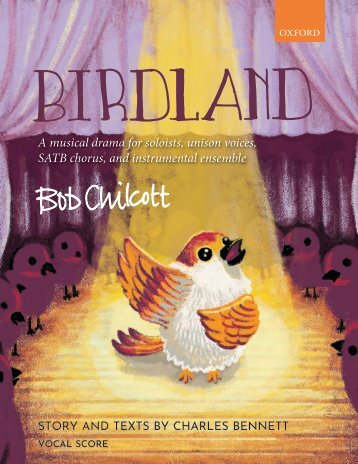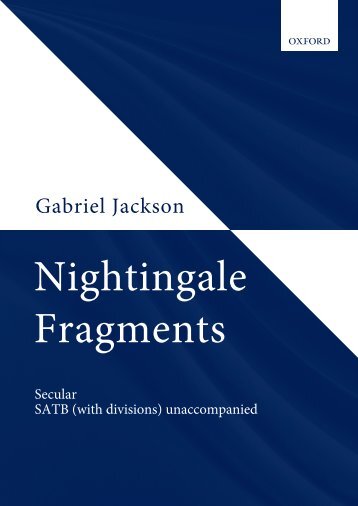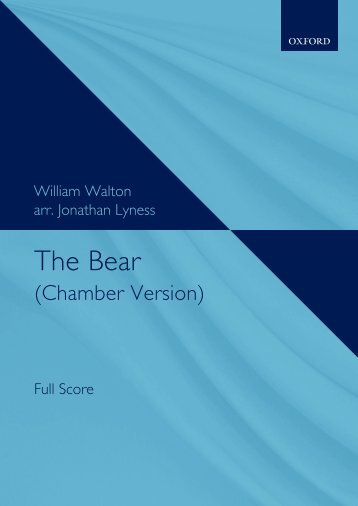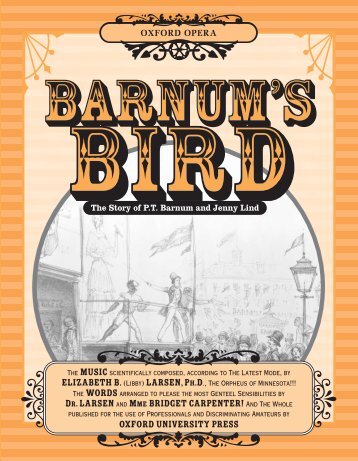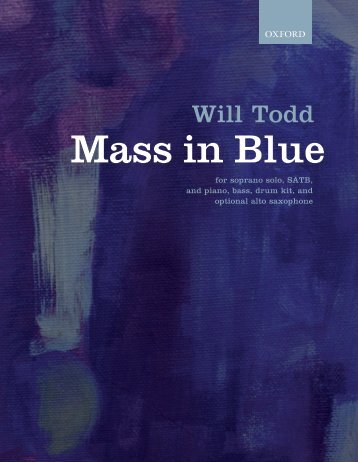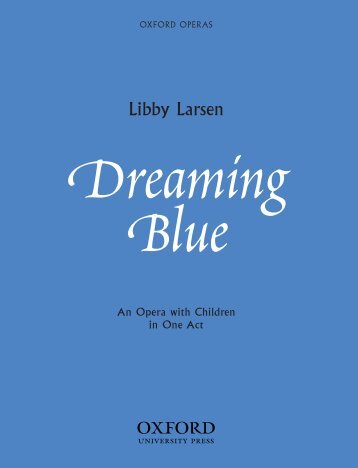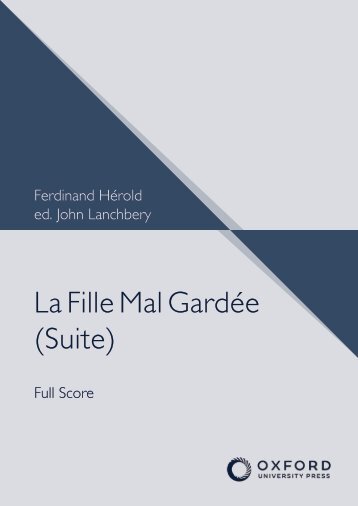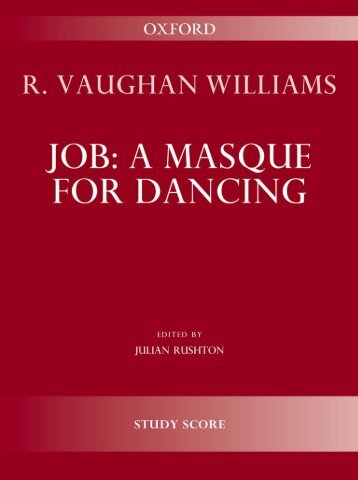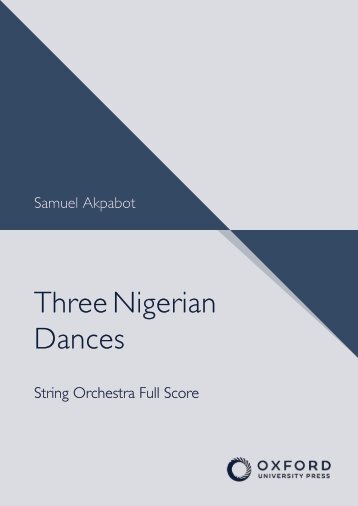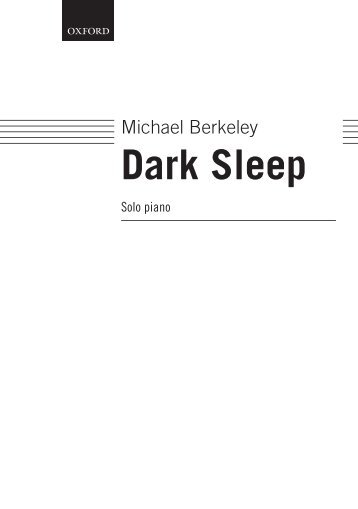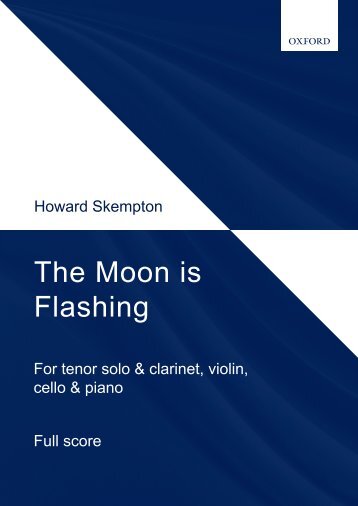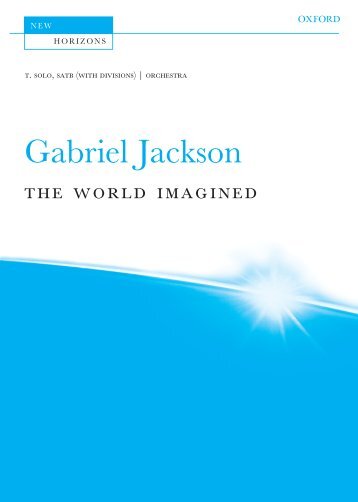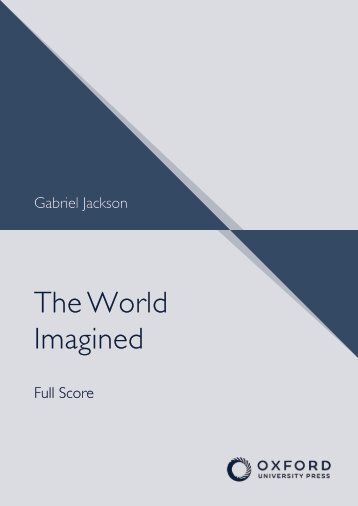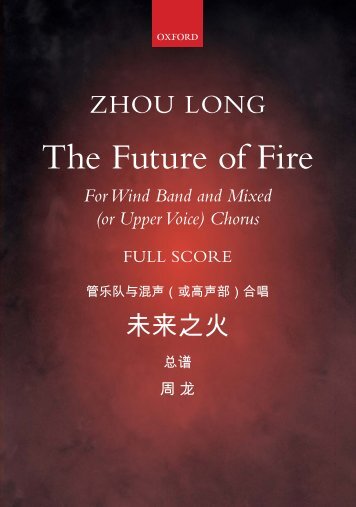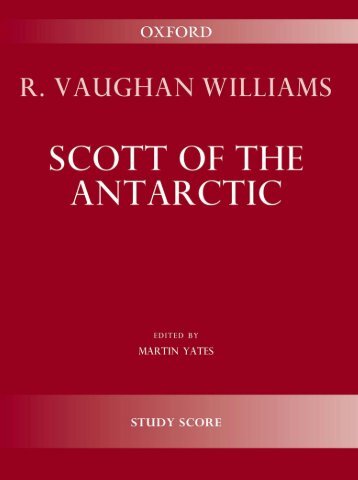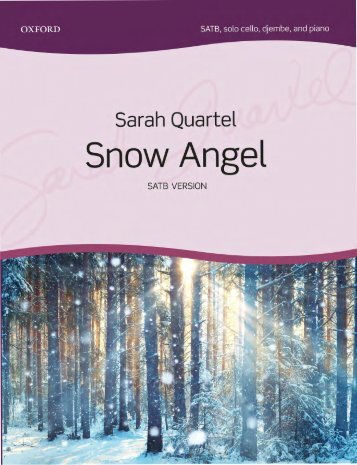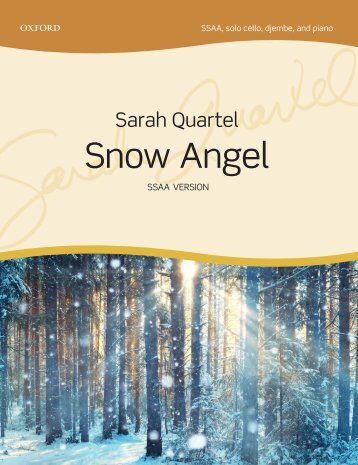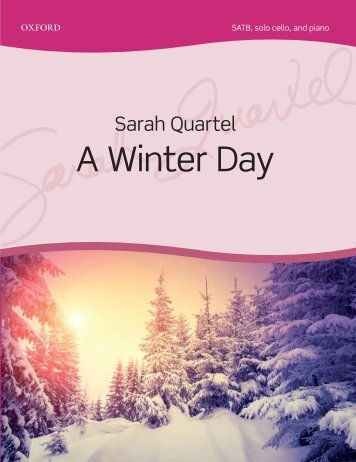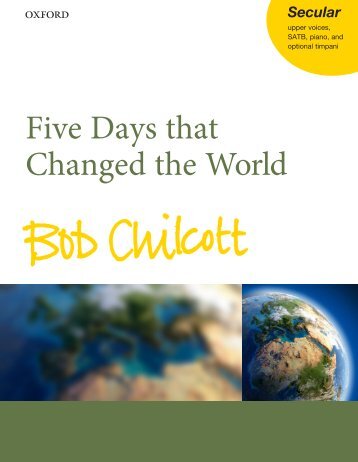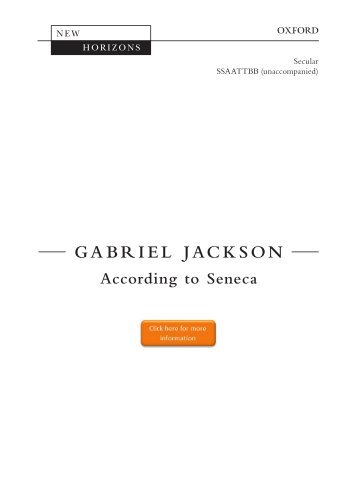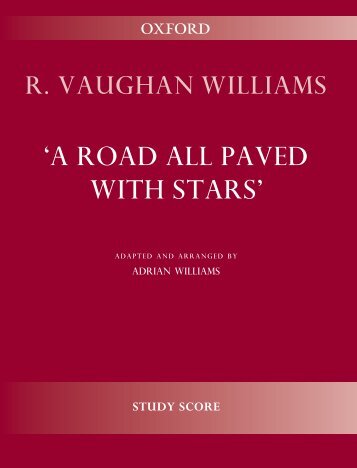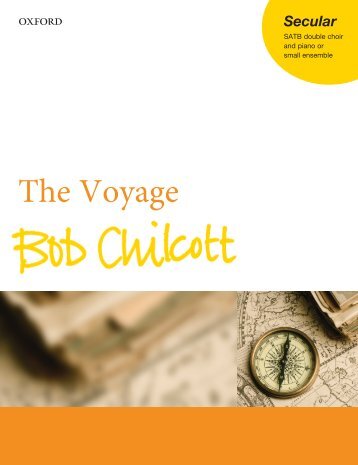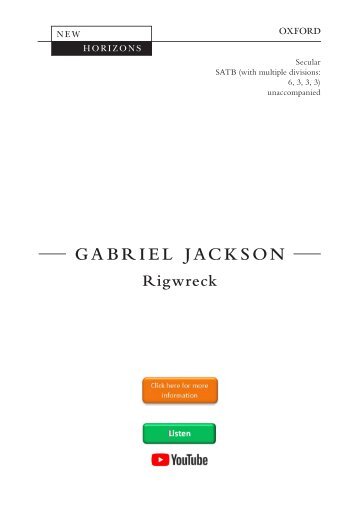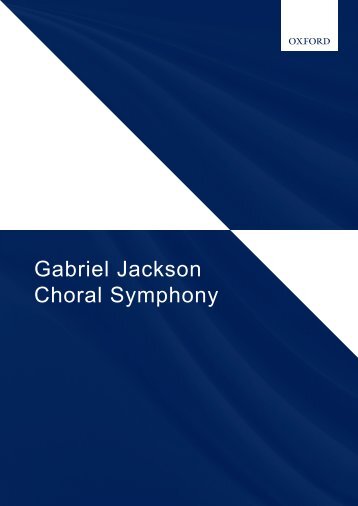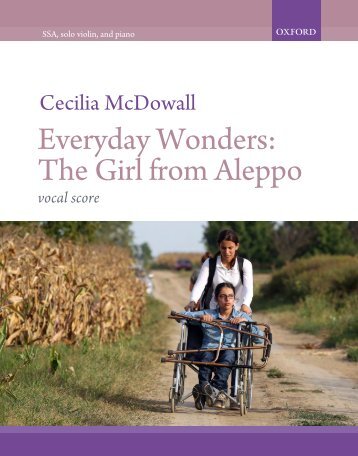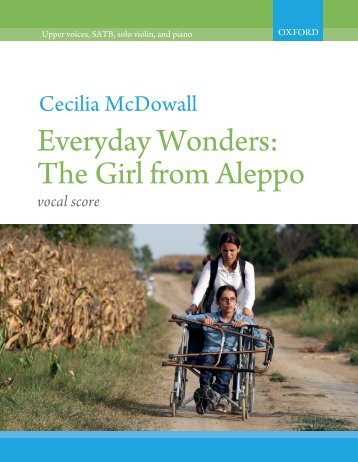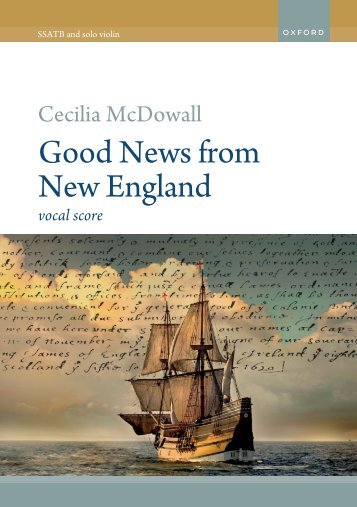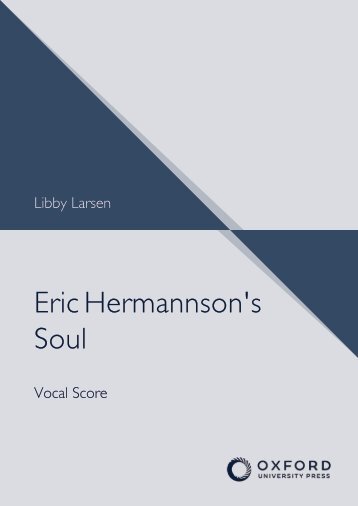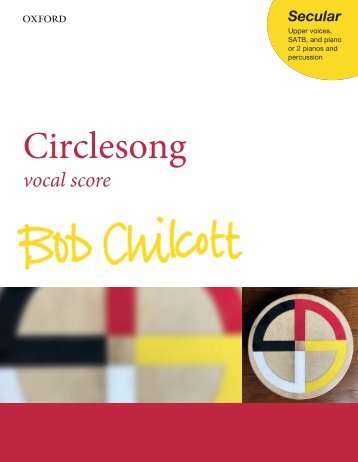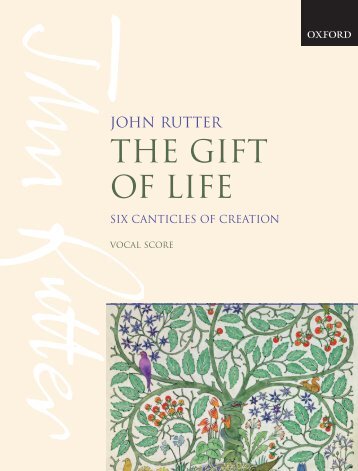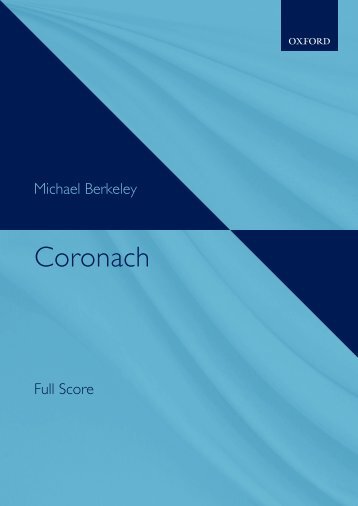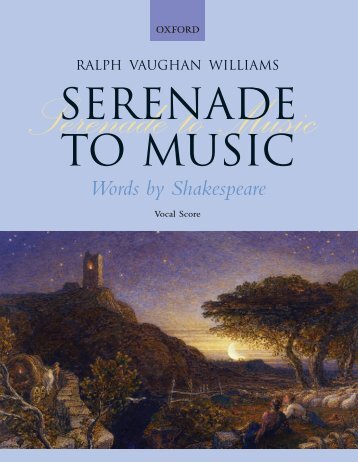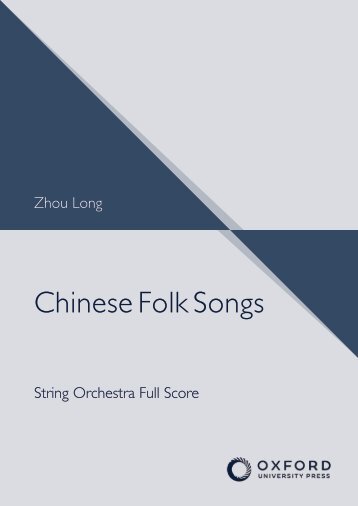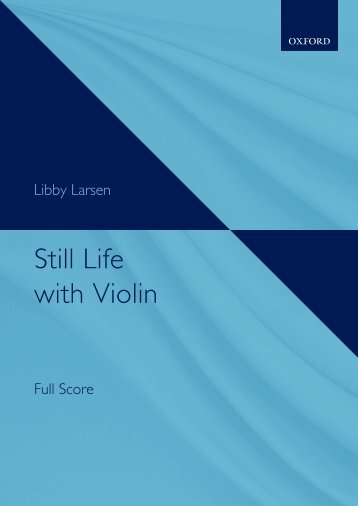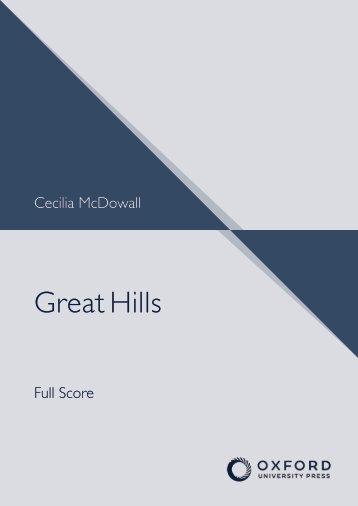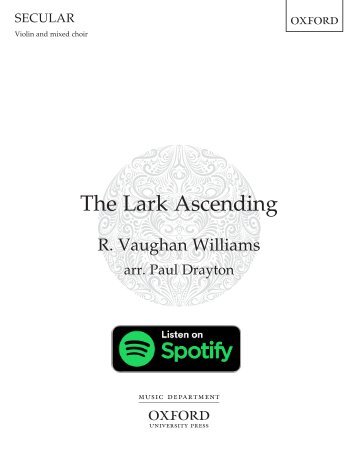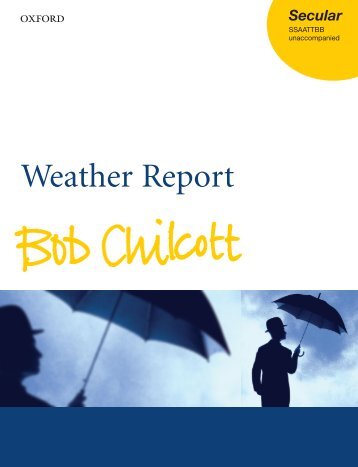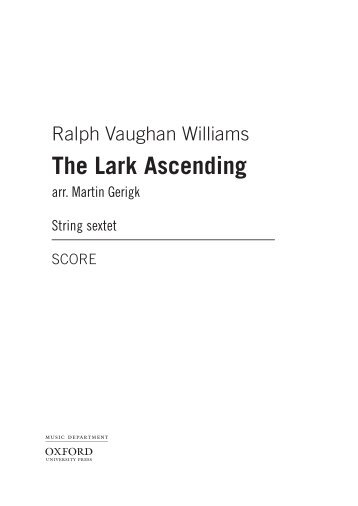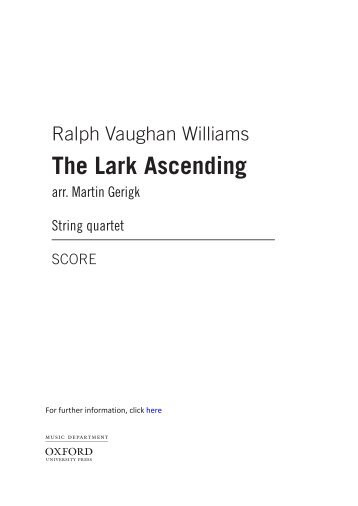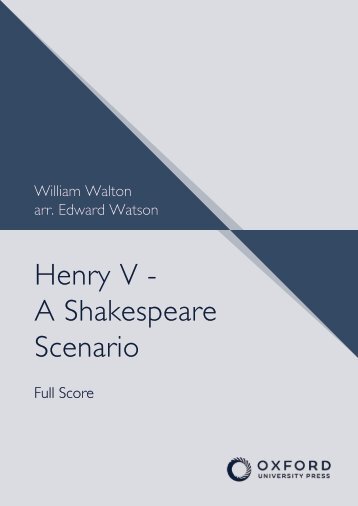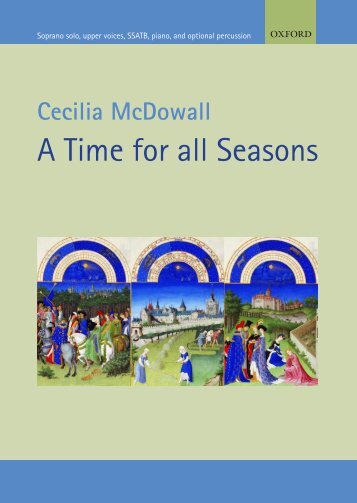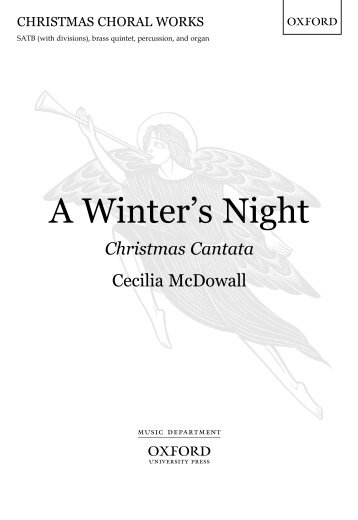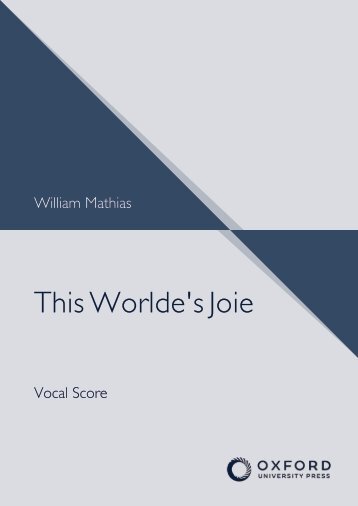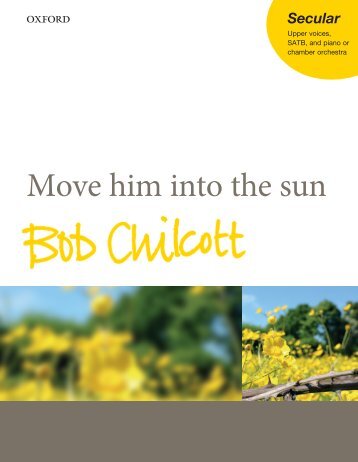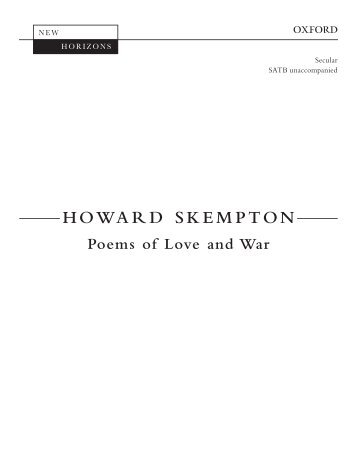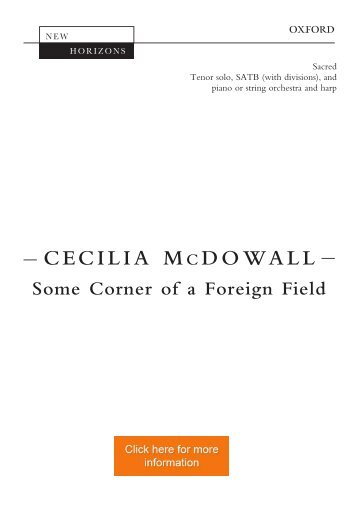
Oxford Programming by Theme
Oxford University Press is proud to publish musical works by some of the most significant composers of the 20th and 21st centuries, with a catalogue that includes a broad range of choral, orchestral and chamber music.

Themes
Select a theme from the list below to view playlists and perusal scores.
- Animals
- Colours
- Dances
- Day and Night
- Elements: Earth
- Elements: Fire
- Elements: Ice
- Elements: Water
- Historical Figures
- Journeys and Transport
- Life and Death
- Light and Dark
- Music about music and sound
- Myths, Legends, and Folktale
- Nature
- Royalty and Ceremony
- Rivers and Oceans
- The Seasons
- War and Conflict
Hilary Tann - From the Feather to the Mountain
- Text
- Nature
- Hilary tann
- Orchestra
Hilary
Hilary Tann From her childhood in the coal-mining valleys of South Wales, Hilary Tann developed the love of nature which has inspired all her music, whether written for performance in the United States (Adirondack Light, for narrator and orchestra, written for the Centennial of Adirondack State Park, 1992) or for her first home in Wales (the celebratory overture, With the Heather and Small Birds, commissioned by the 1994 Cardiff Festival). A deep interest in the music of Japan led to study of the ancient Japanese vertical bamboo flute (the shakuhachi) from 1985 to 1991. Among the works reflecting this special interest are the chamber work, Of Erthe and Air (1990), and the large orchestral work From Afar (premiered in October 1996 by the Knoxville Symphony Orchestra, conducted by Kirk Trevor). From Afar received its European premiere in 2000 by the BBC National Orchestra of Wales and is scheduled for the opening concert of The International Festival of Women in Music Today at the Seoul Arts Center in Korea (KBS Philharmonic Orchestra conducted by Apo Hsu,April 2003). Tann lives south of the Adirondacks in upstate New York where she chairs the Department of Performing Arts at Union College in Schenectady. She holds degrees in composition from the University of Wales at Cardiff and from Princeton University. From 1982 to 1995, she was active in the International League of Women Composers and served in a number of Executive Committee positions. Numerous organizations have supported her work, including the Welsh Arts Council, the New York State Council on the Arts, the National Endowment for the Arts, and Meet the Composer/Arts Endowment Commissioning Music USA. A number of her chamber works are available on the Capstone and N/S Consonance labels. Since 1989 her music has been published exclusively by Oxford University Press. Her connection with Wales continues in various choral commissions—The Moor for the Madog Center for Welsh Studies, Psalm 104 (Praise, my soul) for the North American Welsh Choir, and Wales, Our Land for the Green Mountain College Welsh Heritage Program. The influence of the Welsh landscape is also evident in many chamber works—The Cresset Stone (solo violin), and The Walls of Morlais Castle (oboe, viola, cello). In July 2001, The Royal Liverpool Philharmonic Orchestra conducted by Owain Arwel Hughes premiered The Grey Tide and the Green, commissioned for the Last Night of the Welsh Proms. Recent years have brought a series of concerto commissions—for violin (Here,the Cliffs premiered in October 1997 by the North Carolina Symphony Orchestra with violinist Corine Brouwer Cook), for alto saxophone (In the First, Spinning Place premiered in March 2000 by the University of Arizona Symphony Orchestra with Debra Richtmeyer as soloist), and for cello (Anecdote, premiered in December 2000 by the Newark Symphony Orchestra, Newark, Delaware, with Romanian cellist Ovidiu Marinescu). In March 2001, Tann was guest composer-in-residence with the Louisville Symphony Orchestra in conjunction with a performance of her 1989 concert overture, The Open Field (In memoriam Tienanmen Square). (January 2003)
Hilary Tann From the Feather to the Mountain For Orchestra Composed in 2004 in response to a commission from the Empire State Youth Orchestra for their 25th anniversary season. Premiered on 20 March 2005 at Troy Music Hall, Troy, New York, by the Empire State Youth Orchestra, conducted by Helen Cha-Pyo. Duration: 14 minutes Instrumentation 1 Piccolo Percussion 1 2 Flutes Snare Drum; Temple Blocks (sm., med., lg.) 2 Oboes Percussion 2 2 Clarinets (B!) Snare Drum; Suspended Cymbal (med.) 2 Bassoons Percussion 3 4 Horns (F) Glockenspiel; Chimes; Wood Blocks (sm., med., lg.) 3 Trumpets (B!) Percussion 4 2 Trombones Vibraphone; Triangle (med); Crash Cymbals; 1 Bass Trombone Tenor Drum 1 Tuba Celeste 4 Timpani Harp Strings ● The two snare drums should be evenly matched in timbre and should be located left and right within the orchestra for maximum stereo effect. ● A piano may be substituted for the celeste. ● An electric piano may be substituted for the harp. ● All string harmonics are natural harmonics: at the octave, the twelfth, and the double octave. Program Note The image of the title comes from a recorded statement by artist, Arnie Bittleman: “I found a feather while walking down a road. The feather, if you look closely, has a landscape, a cloudscape in it.” The piece is in one continuous movement with three main sections—cloudscape (fast, light, woodwind-dominated), landscape (slow, string-dominated), and mountainscape (fast, rhythmic, brass and percussion to the fore). “Walking” passages (with hints of New York folksongs) link the sections.
- Page 1: Hilary Tann From the Feather to the
- Page 5 and 6: 4 A 8 [ Picc. ! 4 C O T R R S C W B
- Page 7 and 8: 6 18 [ Picc. ! 5 B W C C C C 4 4 A
- Page 9 and 10: 8 D 26 [ Picc. ! 4 Q 2 4 Q 4 Q Q 4
- Page 11 and 12: 10 E 35 [ B > O B C Picc. ! 4 h T S
- Page 13 and 14: 12 Picc. 43 [ ! 4 Q 2 Q 4 4 C 2 4 4
- Page 15 and 16: 14 58 [ Picc. ! Q Q Q Q Q C C C C C
- Page 17 and 18: 16 H 78 [ Picc. ! Q Q Q Q Q Q Q Q Q
- Page 19 and 20: 18 I 97 [ Picc. ! Y C Y C X C W C C
- Page 21 and 22: 20 J 111 [ C O C Y C Y C' C' Y C' P
- Page 23 and 24: 22 131 [ Picc. ! Q Q Q Q Q C W C C
- Page 25 and 26: 24 M 151 [ Picc. ! C Y C C C C C C
- Page 27 and 28: 26 N 169 [ C C C C C C Y C C Y C Y
- Page 29 and 30: 28 189 Meno mosso ($ = 72) P Recita
- Page 31 and 32: 30 Picc. 208 [ ! Q Q Q Q Q Q Q Q Q
- Page 33 and 34: 32 rit. a tempo 230 [ Picc. ! Q Q Q
- Page 35 and 36: 34 Picc. 250 [ ! 5 Q Q 4 Q 8 5 Q 8
- Page 37 and 38: 36 U 264 Espressivo ($ = 96) [ Picc
- Page 39 and 40: 38 rit. W a tempo ($ = 96) 286 [ Y
- Page 41 and 42: 40 Picc. 304 [ ! 4 Q 5 Q 8 4 Q Q 4
- Page 43 and 44: 42 Z 315 [ Picc. ! 4 Q Q Q Q 4 5 Q
- Page 45 and 46: 44 AA 324 [ Y C > Picc. ! h T S R Q
- Page 47 and 48: 46 Picc. Fl. 1 2 ! 334 [ ! Q Q Q Q
- Page 49 and 50: 48 CC 350 [ Picc. ! Q 5 S O 8 C p W
- Page 51 and 52: 50 364 [ Picc. ! 4 Q Q Q 5 Q 4 4 Q
- Page 53 and 54:
52 374 [ rit. Picc. ! Q Q Q Q 5 Q Q
- Page 55 and 56:
54 GG 391 Espressivo (* = 126) [ ac
- Page 57 and 58:
56 Picc. 415 [ ! 4 Q Q 5 Q 4 4 Q Q
- Page 59 and 60:
58 JJ rit. allarg. 427 C > [ Y C C
- Page 61 and 62:
60 KK allarg. al fine 441 [ Picc. !
- Page 63 and 64:
for online perusal only
- Page 65:
for online perusal only 198 Madison
Inappropriate
Loading...
Mail this publication
Loading...
Embed
Loading...

